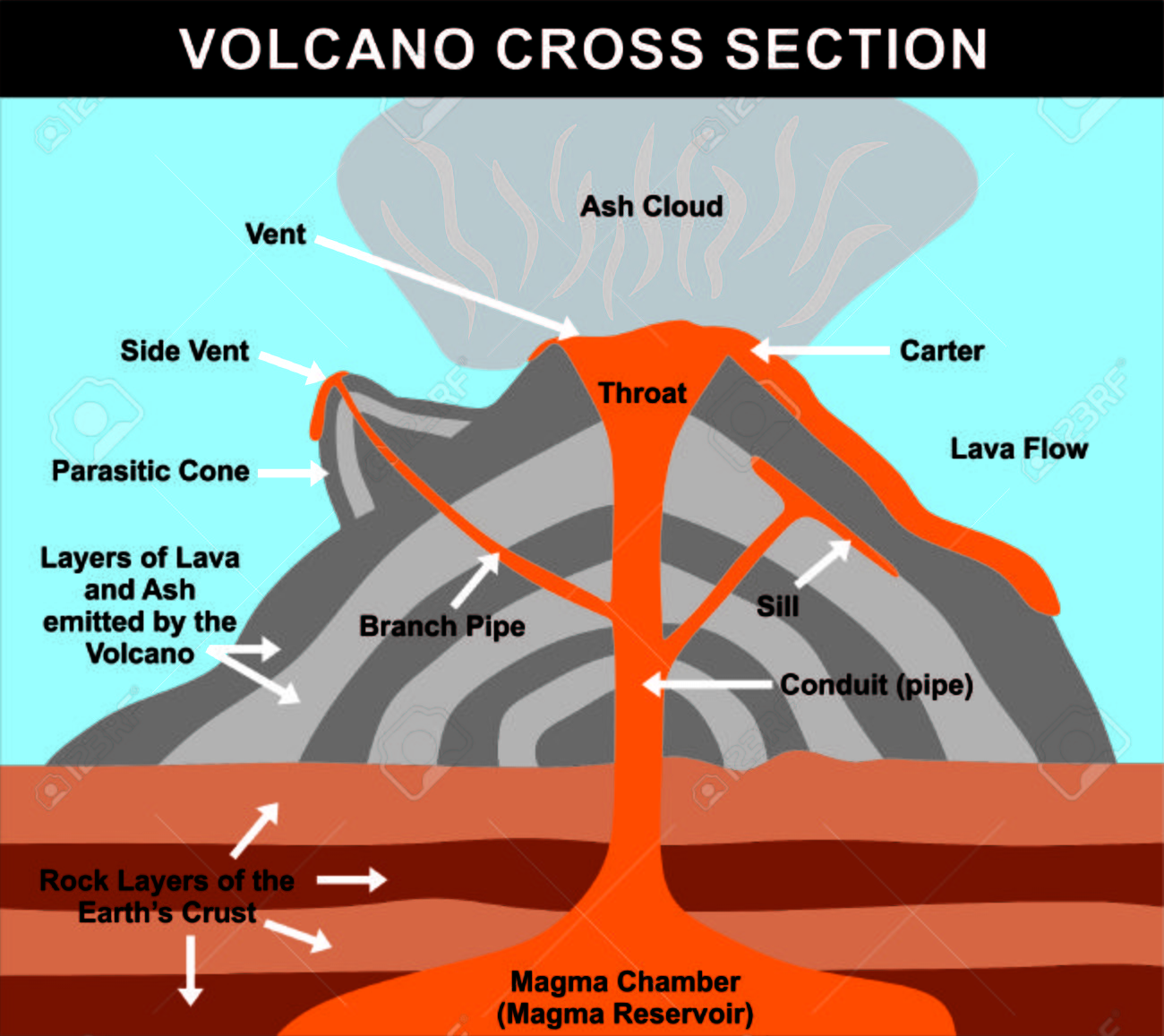Volcanoes - Mauna Loa
In science, we have been learning about the earth. Currently, we are learning about the volcanoes and how they work, and how to identify every part and its name. We got given the task to pick whatever volcanoes we wanted it could be from anywhere in the world, and research it. After we have done research we then get to form little groups and make erupting volcanoes our selves. Once I picked my volcano I then had to research it before making a model. The volcano I decide to research was Mauna loa, which is one of five volcanoes that form the island of Hawaii in the pacific ocean. Down below is my research, hope you enjoy reading.
What is a volcano?

A volcano is a mountain that opens downward to a pool of molten rock the surface of the earth. Volcanoes are the result of the earths trying to lose its internal heat. Deep inside the earth, between the molten iron core and the thin crust at the surface, there is a solid body of rock called the mantle. When rock form the mantle melts it moves to the surface through the crust and releases gases. When pressure builds up an eruption occurs. These forces drive the gases and hot liquid, known as magma out through the volcanoes orifice known as a vent. Once out of the vent rock shoot up through the opening and spill over or fills the air with lava fragments. Eruptions tend to cause lava flows, hot ash, mudslides, avalanches, falling ask and floods. An erupting volcano can trigger tsunamis, flash floods, earthquakes, and rockfalls.
How are volcanoes formed?
 Volcanoes are formed when tectonic plates collide and go through the process of subduction. This sets the foundation for a volcano. The overlapping of the plates causes the magma to break through the earth's crust. Once it has made its way to the earth surface, a solid body of rock lies within. When the temperature and pressure rises, the rock melts and moves through the surface and crust witch then releases gases and magma. Magma is forced up to the surface of the Earth because it is less dense. This then flows out through an opening called the vent.
Volcanoes are formed when tectonic plates collide and go through the process of subduction. This sets the foundation for a volcano. The overlapping of the plates causes the magma to break through the earth's crust. Once it has made its way to the earth surface, a solid body of rock lies within. When the temperature and pressure rises, the rock melts and moves through the surface and crust witch then releases gases and magma. Magma is forced up to the surface of the Earth because it is less dense. This then flows out through an opening called the vent.Mauna Loa volcano
 Mauna Loa is the world's largest and one of the most active volcanoes on the island of Hawaii. it is about 600, 000 - 1,000,000 years old. Although the volcano has not erupted in a few years, it is one of the most active volcanoes in the world. When it erupted it usually produces a large river of lava.
Mauna Loa is the world's largest and one of the most active volcanoes on the island of Hawaii. it is about 600, 000 - 1,000,000 years old. Although the volcano has not erupted in a few years, it is one of the most active volcanoes in the world. When it erupted it usually produces a large river of lava.
 When did Mauna Loa volcano last erupted and did it do any damage?
When did Mauna Loa volcano last erupted and did it do any damage?
Mauna Loa last erupted in March 24th to April the 15th, 1984. Not that much damage was caused by this. The lava flows cause no significant damage except for burying about 16 miles of land owned by the sate.
No recent eruptions have caused deaths, but eruptions in 1926 and 1950 destroyed villages.

Volcano eruption
Here is my group and I volcano eruption. For our eruption to work we used 4 spatulas of potassium iodide in 20ml of water, 35% of hydrogen peroxide, dishwashing liquid, a few drops of green food clouring, and some gold glitter. Hydrogen peroxide turned into water plus oxygen.

No comments:
Post a Comment
Note: only a member of this blog may post a comment.